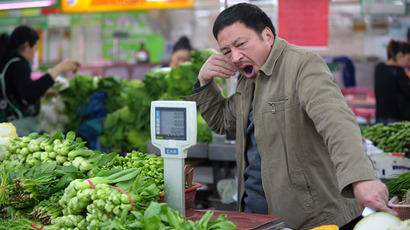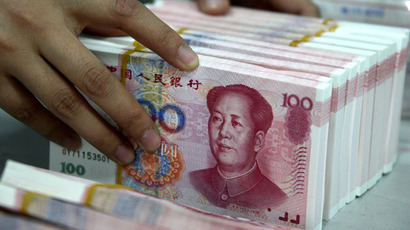Yuan Dynasty: The ‘sexy’ Chinese growth story and China’s convertibility plan
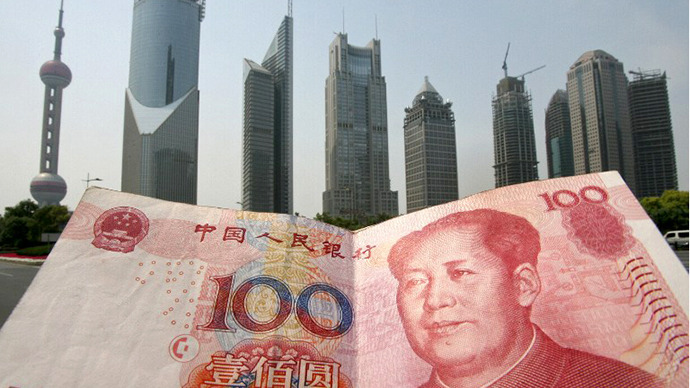
The ‘Chinese dream’ has been made clear. The yuan will begin convertibility measures in 2013: the People’s Republic will lower interest rates, deregulate foreign investment quotas, and loosen controls on stock and bond markets.
China’s goal for 2013 is economic reform, the State Council announced Tuesday. But, the state will have to ‘split the economic baby’ – find a balance between exposure to the free market and state discipline.
China has signaled it will allow its currency to be bought, sold, and traded without any state intervention or restriction.
The growth restructure will redefine the global economic monetary system, as the closed-capital pariah ‘people’s currency’ makes its debut as ‘free’.
The yuan reflects China’s complicated (love-hate) relationship with capitalism and the global markets, and Margaret Bogenrief, a co-founder of the financial advisory ACM Partners, deems the transition inevitable, but doesn’t anticipate it’s going to be smooth.
The yuan is an economic reflection of China’s perceived political, socio-economic, and demographic reality and future of China. Bogenrief describes it as a 'financial manifestation' of the Chinese government's grand scheme. It is the key to unlock global markets and the opportunities that come with exposure to the global markets.
"The yuan will inevitably continue to reflect China’s struggle to both maximize exposure to open/free markets and the Chinese government’s push to control China’s people, politics, and economy," Bogenrief told RT.
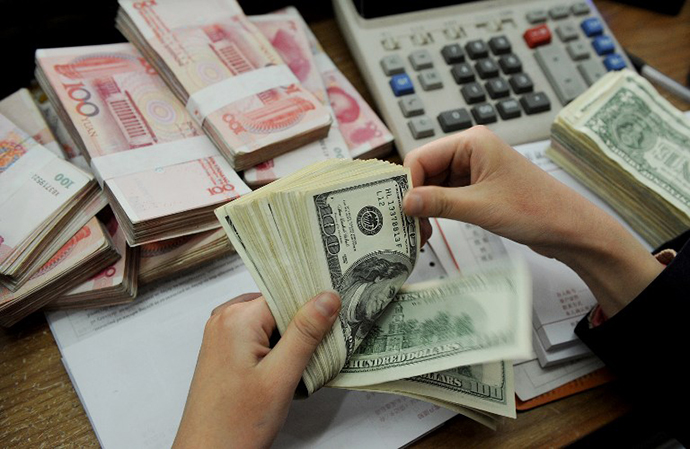
A catch exists. As China tests the waters of capitalism, it is left at a crosswords. Either the government will turn inward, continuing its 'hermit' status and exert greater control over markets, or, the yuan will be 'released' into the global economy and traded openly like most other power currencies- the pound, euro, dollar, and yen.
"China finds itself in an increasingly difficult and unsustainable economic place, straddling both Communist and capitalist worlds and ideals. Frankly, China can’t continue to have it both ways: either the government will be forced to completely open the economy, thereby unleashing pent up political and economic frustration and rebellion across the country, or seal and (somewhat) shut its financial and economic borders, slowing growth and retreating inward. Whether the Chinese government wants to keep the yuan as a “hermit” currency or not, the global economy will eventually force the country to choose one way or another," said Bogenrief.
Most economic experts are predicting the yuan will be a fully convertible currency within the next five years, but Bogenreif sees vulnerability in the aftershock the transition will send through the country.
"The process and the aftermath will most likely be an ugly one for China," said Bogenrief.
China's economy, and the yuan, and been driven by the last 30 year export boom. It's not the American dream of Westward expansion where people struck it rich with their entrepreneurship. China is an ancient nation-state, and has been driven by a growing middle class that supplies the export market with skilled labor.
But if it 'turns' on the foundation that brought it to economic greatness (it's GDP, the world's second largest, is almost 50% of the US economy, according to World Bank figures), the Chinese dream will never materialize.
The export boom may be coming to a halt, spurred by the global recession, contracting demand from Europe, and no promising signs from the United States that its economy won't dip back into stagnation. China's exports, too, will slow, and the yuan needs to be able to withstand the shock this will bring to manufacturers who will suddenly find themselves unemployed, or needing to move from the coastal hotspots in order higher prices a free yuan may usher in.
In other words, the 'sexy' growth story may be over.
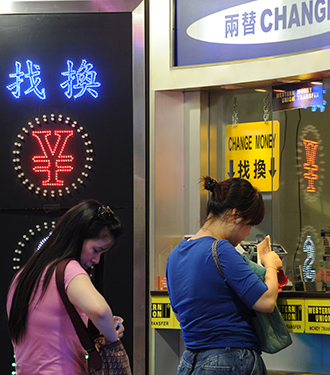
"China is an absolute mess demographically and politically: while America's population is set to rise by 30% in the next 40 years, China’s is set to peak population-wise in 2026, sharply decreasing after that. Furthermore, China is aging at an unprecedented pace in modern history: by 2050, the average person in China will be 49, nearly a decade older than in the United States. A massive issue when one considers that China’s unfunded pension liability ALREADY totals roughly 150% of the country’s GDP, with local governments currently reneging on pension obligations. Finally, between 2013 and 2050, China's workforce is set to shrink 11% as a share of the population, from 72% to 61%—a huge contraction, meaning the end of ‘made it China’ as the world’s source for cheap labor. In fact, within the next 20 years, China will begin importing workers from outside, rather than exporting them, slowing growth in an already-stressed economy. More immediately, startling data released this week showed manufacturing activity growing at a slower pace, as China's official manufacturing purchasing managers' index for April fell to 50.6 from March's 50.9 (keeping in mind the number 50 represents a stasis for growth). Furthermore, HSBC's China April PMI came in at 50.4, down from 51.6 in March, suggesting further slowdown in a country in which experts agree nearly 50% of recent growth has derived from internal (and not-yet-paid-for) projects, such as road, bridge, and housing construction (financed by non-supported loans from the national level to regional banks currently coming to term). Consequently, what these numbers demonstrate is that the global market’s positive reaction to the yuan is more a current rejection of the dollar’s and euro’s weakness(es), not so much a vote of confidence for the country’s economic fundamentals," Bogenrief briefed.
China is still an emerging market. The success story is grand, and it is impressive, but the market still remains turbulent and highly dependent on US and European viability.
The yuan reflects China’s complicated (love-hate) relationship with capitalism and the global markets. As the government and fiscal policy stands now, the yuan will be forced into “free floating” status.
"After all, the country can’t have it both ways: capitalistic enterprise driving its growth means China will eventually be forced to fully open its country and currency (or, in turn, shut its borders to the world," said Bogenrief.
"No one grand trigger will shake China’s industries: instead, look for the country to lag in the next 5-10 years in correlation with the global economy."
Bogenrief foresees the yuan taking a similar route as China- it will explode as an over-valued currency, retreat after great market excitement and then deflate. It will then settle into a second-tier currency, behind the euro and dollar.
Others are pegging their hopes high on the yuan. Many national banks are now switching over the yuan to diversify their reserve currencies. It may just be a temporary fad, but it could also transform into a norm.
"This is more a reflection of the world’s pessimism toward the dollar (and euro) more than anything; of course, the yuan is not a current bad bet to hedge one’s reserve currencies. But the economic world often churns through these “trends” of turning to emerging currencies in times of economic uncertainty for major world powers," said Bogenrief.













